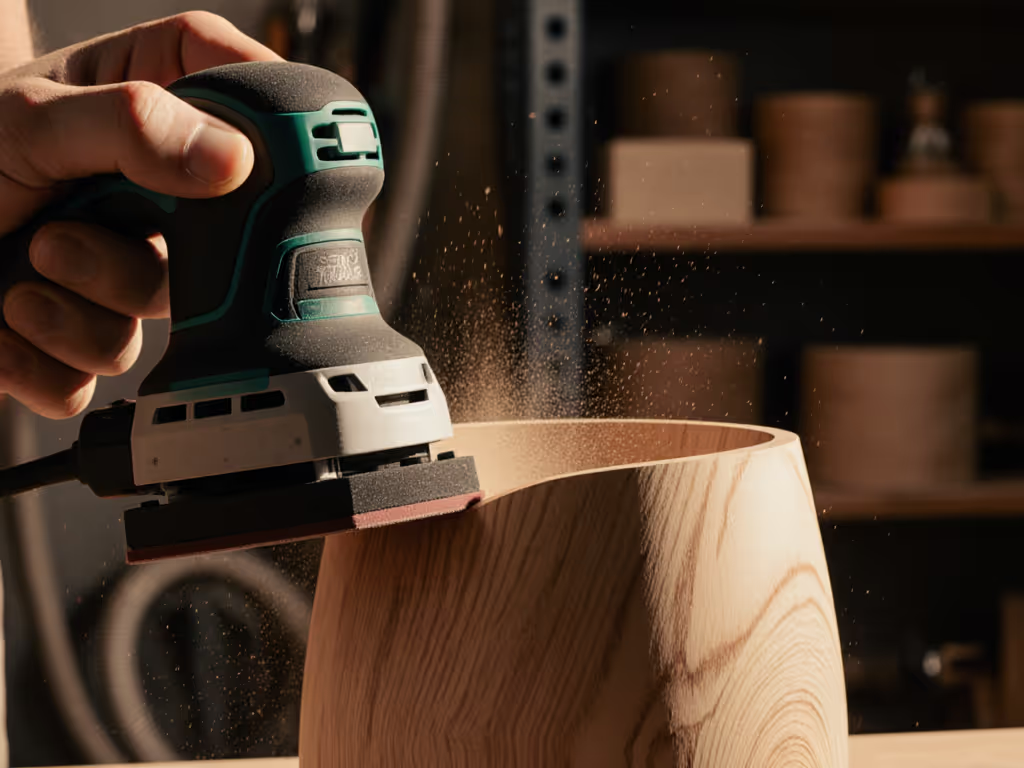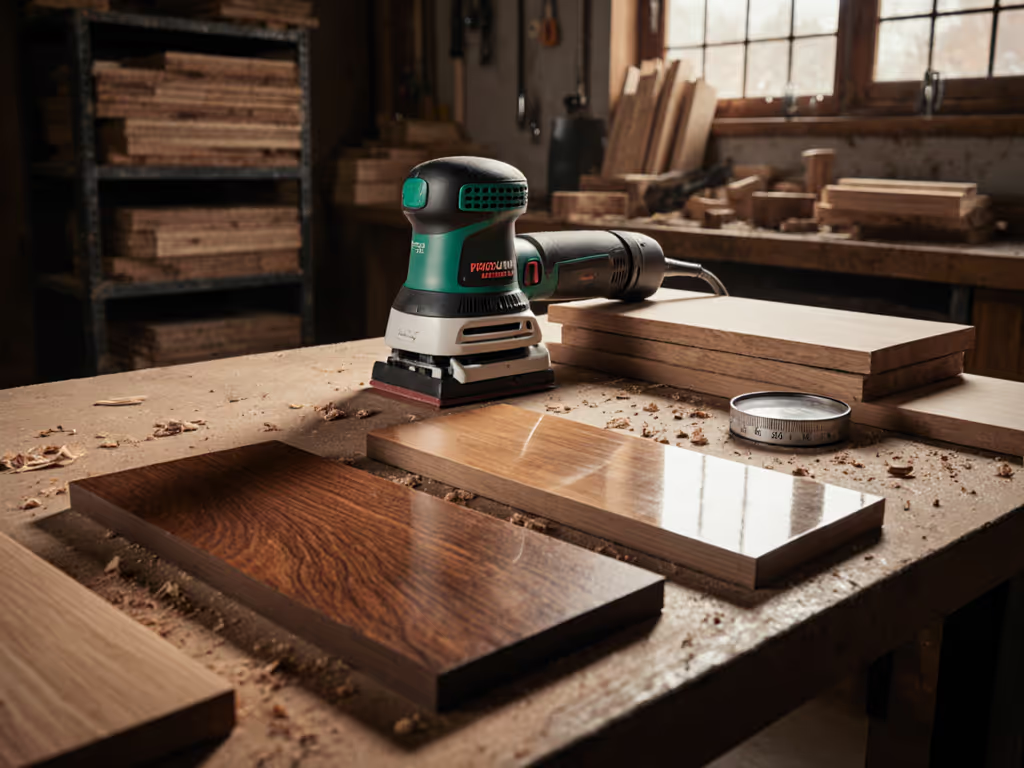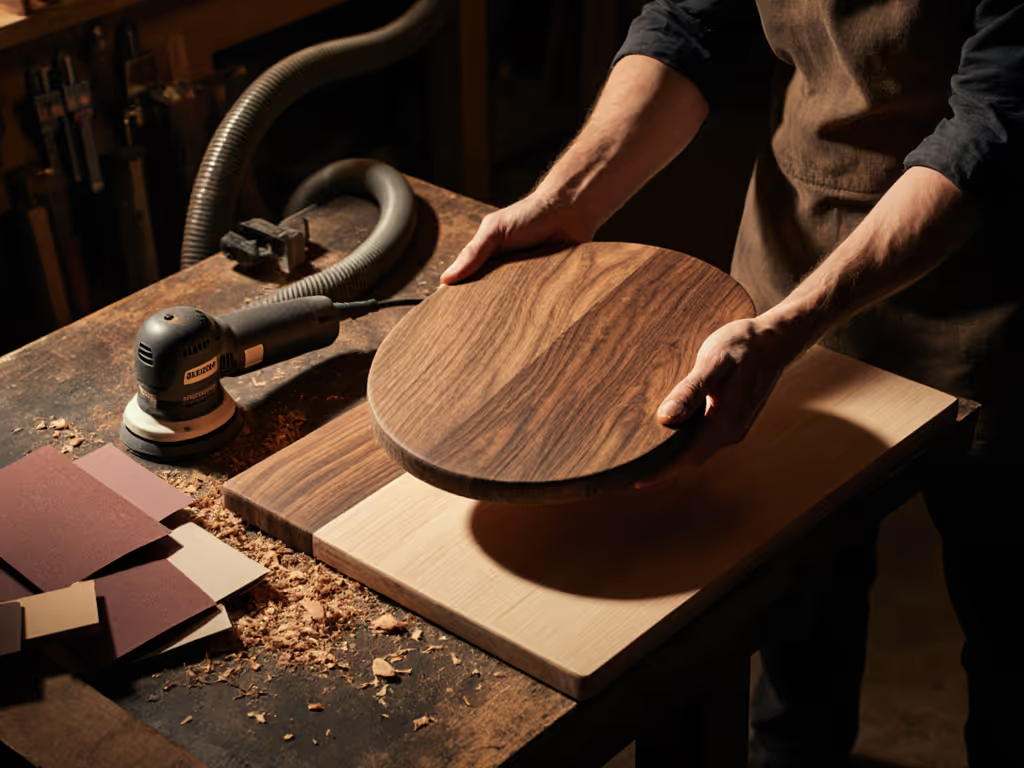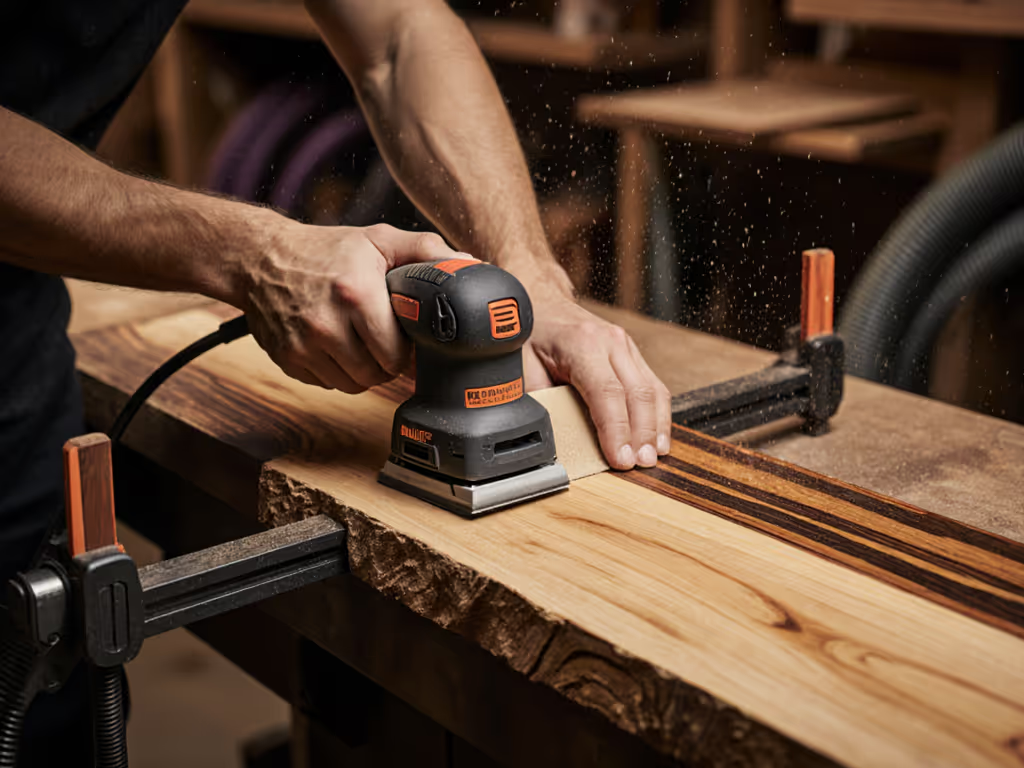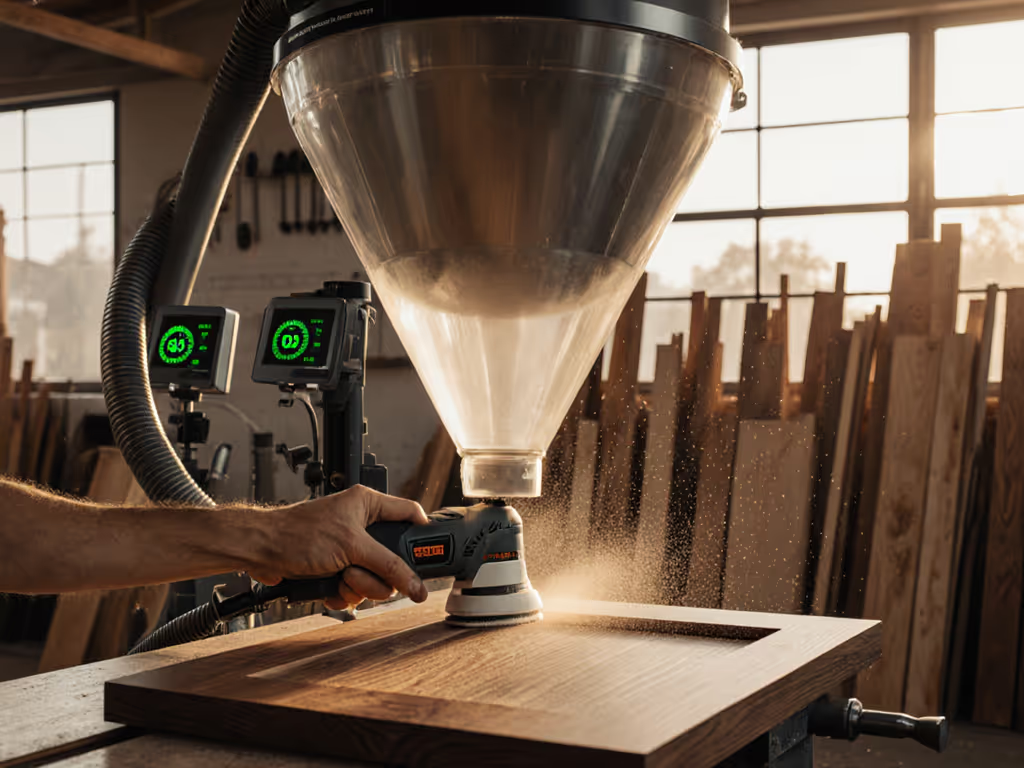
Sandpaper Science: Choose Abrasives for Swirl-Free Finishes
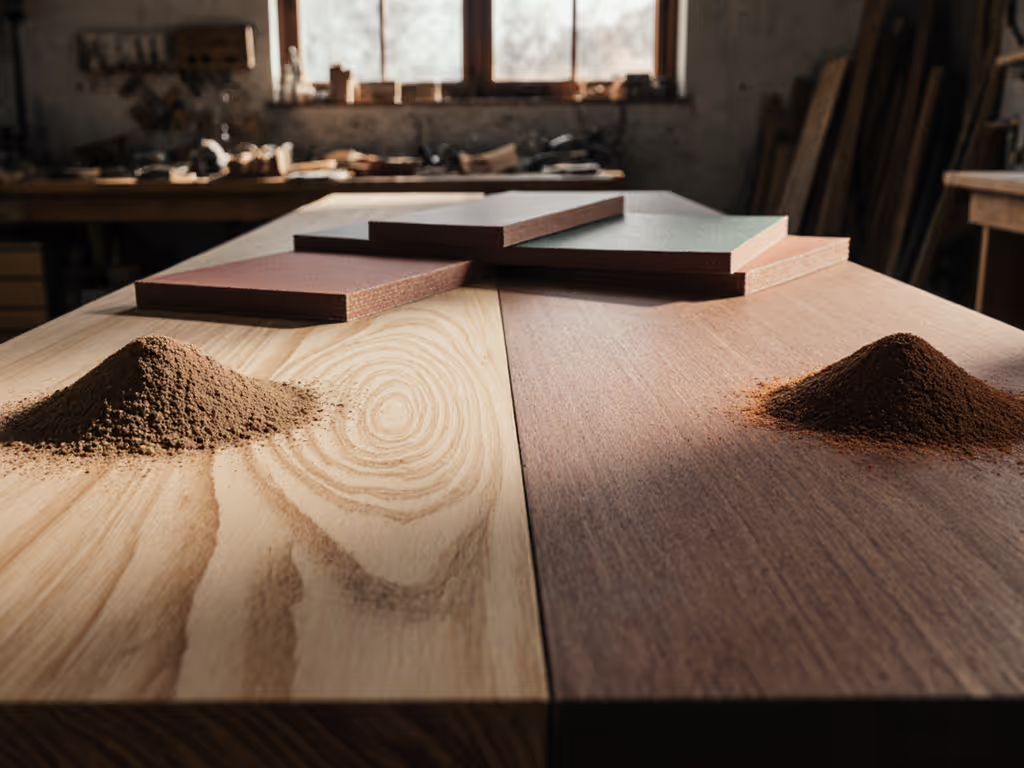
Understanding your sandpaper composition is non-negotiable when selecting the right sanding tool for professional interior finishes. The wrong abrasive choice doesn't just create visible swirl marks; it compromises the entire finishing system, from initial substrate prep to final topcoat application. For crews working in occupied homes and commercial interiors, where dust control and finish quality directly impact client satisfaction and crew health, material science matters as much as technique. Healthy hands and lungs are prerequisites to professional finishes, a truth I've seen validated repeatedly across countless renovation sites.
The Swirl Mark Problem: More Than Just Cosmetic
Swirl marks that emerge under raking light after topcoat application represent a systemic failure in the sanding process, not merely a technician's error. These defects occur when abrasive particles fail to create consistent scratch patterns across varying substrates, particularly when transitioning between hardwood, veneers, MDF, and painted surfaces. Inconsistent scratch depth prevents even sealer and topcoat penetration, creating light-refracting ridges that become visible at specific angles. For technique fundamentals that reduce these patterns, see our sanding wood grain direction guide.
When followed by a primer or topcoat, these microscopic inconsistencies magnify into visible defects requiring complete rework. For cabinet refinishers working on tight deadlines, this means hours of additional labor (hours that erode profit margins and damage reputations). Worse, many crews compound the problem by jumping to finer grits too quickly without properly eliminating previous scratch patterns, creating a false sense of progress while embedding deeper issues.
The Hidden Health and Performance Impacts of Poor Abrasive Selection
The consequences of improper sandpaper selection extend far beyond surface quality. When abrasives load prematurely on paints or softwoods, operators instinctively increase pressure, elevating both vibration exposure and dust generation. In one monitored project, crews using inappropriate abrasives on alkyd paints exceeded 4.5 m/s² A(8), with exposure minutes accumulating 20% faster than when properly matched abrasives were used. Similarly, dust measurements revealed concentrations reaching 12.7 mg/m³, compared to OEL references of 5 mg/m³ when operators compensated for clogged abrasives with increased pressure. To keep concentrations well below OELs, dial in extraction with HEPA sanding practices.
This creates a vicious cycle: loaded abrasives require more force, increasing both dBA at ear and dose % while simultaneously generating more respirable particles. To curb exposure at the source, select low-vibration sanders that maintain cut without extra pressure. Many crews unwittingly expose themselves to double hazards (hand-arm vibration syndrome, HAVS, risks from excessive pressure and silica exposure from dust breakthroughs). I recall a project where an apprentice's early complaints about hand tingling led us to overhaul our entire abrasive system, simultaneously improving finish quality and reducing health risks. The right abrasive choice isn't just about surface perfection; it directly impacts respiratory class (P2/P3) requirements and long-term crew health.
Evidence-Based Abrasive Selection for Professional Results
To achieve consistent, swirl-free finishes while protecting crew health, you need an evidence-based approach to abrasive material selection. Here's what clinical testing and field experience reveal about optimal choices for interior finishing applications:
Matching Abrasive Chemistry to Substrate Properties
Aluminum oxide vs ceramic sandpaper presents a fundamental choice for most interior finishing applications. Aluminum oxide provides superior durability on hardwood cabinetry and trim, with its self-sharpening crystalline structure maintaining cutting efficiency through 3-4 grit sequences. Ceramic abrasives, while more expensive, deliver aggressive cutting on dense exotics and engineered hardwoods with 30-40% longer life (particularly valuable for high-production shops).
For paint and finish removal:
- Aluminum oxide (closed coat) excels on oil-based paints
- Silicon carbide (open coat) prevents loading on water-based finishes
- Zirconia abrasive benefits include exceptional durability on multi-layer finishes common in cabinet refinishing
Hardwood flooring specialists particularly benefit from understanding these distinctions. The best sandpaper for hardwood depends on wood species and finish condition:
- Open-grain woods (oak, ash): Aluminum oxide P80-P120 for initial cut
- Closed-grain woods (cherry, maple): Ceramic P100-P150 for consistent scratch patterns
- Delaminated finishes: Silicon carbide P60 for aggressive removal without tear-out
Sustainable Considerations in Modern Sanding Systems
The growing interest in eco-friendly sanding abrasives reflects both environmental awareness and economic pragmatism. While true green abrasives remain limited, several approaches reduce environmental impact without compromising quality:
- Extended-life ceramic grains that reduce consumable waste by 25-30%
- Recyclable backing materials with minimal chemical binders
- Anti-static coatings that improve dust capture efficiency by 15-20%
However, sustainability claims require verification: always request independent test data on mesh abrasive loading % and hose weight balance effects before switching systems. One manufacturer's 'eco' abrasive might reduce paper waste but increase vibration exposure, negating health benefits.
When selecting abrasives, always consider the complete system impact: finish quality, dust generation, vibration exposure, and consumable waste. The most expensive option often delivers the lowest total cost of ownership through reduced rework, lower health risks, and extended tool life.
Creating a System, Not Just Selecting Abrasives
Professional results require viewing abrasives as part of a complete finishing ecosystem. Consider these integration factors: For abrasive sequencing specifics by material and finish, use our grit progression guide as your baseline.
- Pad hardness matching: Softer pads (25-35 Shore A) for flat surfaces with harder abrasives; firm pads (50-60 Shore A) for profiles with finer grits
- Hole pattern compatibility: Verify 6-, 8-, or 15-hole patterns match your sander's dust extraction system
- Grit progression logic: Never skip more than 2 full grit sequences (e.g., P80→P120→P180) without intermediate steps
For example, when working with a system like the 3M Trizact Hookit Foam Abrasive Discs

3M Trizact Hookit Foam Disc
, professionals note their patterned mineral structures maintain consistent cutting action across multiple passes, reducing the need for intermediate grits while minimizing swirl potential on final paint finishes.

Protecting What Matters Most in Professional Finishing
The pursuit of perfect finishes begins with understanding the science behind your abrasives, not as isolated consumables but as integrated components of a health-conscious finishing system. By matching abrasive chemistry to substrate properties and considering the complete health implications of each choice, you create conditions where flawless results become the norm rather than the exception.
Protect hands, lungs, and tempo; the finish will follow. For PPE selection and daily protocols, follow our power sander safety guide. When crews maintain proper technique without compensating for poor abrasive performance, they achieve consistent results while operating within safe vibration and dust exposure limits. This isn't just good practice; it is the foundation of sustainable, high-quality interior finishing that protects both your reputation and your team's long-term health.
For those seeking deeper technical insights, the Abrasives Manufacturers Association publishes detailed comparative studies on abrasive grain performance across substrates, data that goes beyond marketing claims to provide measurable performance metrics for professional finishing applications.

